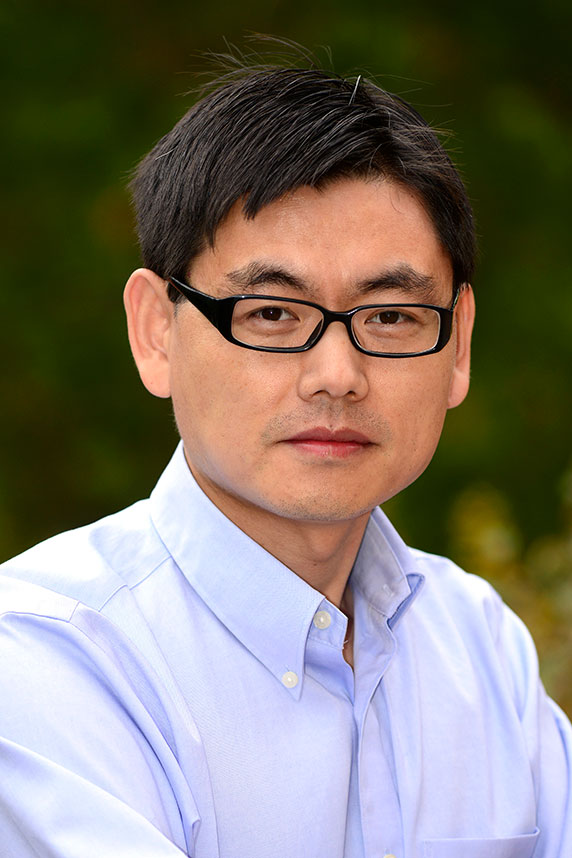Observing brain cell activity in real time using sophisticated imaging methods has captivated the attention of Guohong Cui, M.D., Ph.D., since he joined NIEHS in 2014. Today, the recently tenured scientist and In Vivo Neurobiology Group leader explores how movement is controlled in animal models to improve understanding of and treatment for neurodegenerative conditions, such as Parkinson’s disease.

Parkinson’s disease results from the degeneration of neurons in the brain that produce the chemical messenger dopamine. This degeneration leads to various symptoms, including slowed movement, problems with speech or balance, and tremors in the limbs and face. Though the exact cause of Parkinson’s disease remains unknown, Cui’s research group is working to understand how energy-producing organelles in cells called mitochondria might play a role.
Environmental Factor recently sat down with Cui to talk about his journey to NIEHS, the mentors who have helped him along the way, and what he hopes to work on in the future.
EF: How did your scientific journey begin?
Cui: My original dream was to be a neurosurgeon. I earned a medical degree, but I decided to pursue a career in research science when I couldn’t join the hospital that I wanted to in Beijing due to a quota system for out-of-town residents.
Given my interest in the brain, I joined a Ph.D. program in neuroscience at the University of Texas at Austin. Once I graduated, I became particularly interested in bigger-picture, systems-level research, especially the question of how the brain functions in human beings.
EF: What brought you to NIEHS?
Cui: During my postdoctoral training at the National Institute on Alcohol Abuse and Alcoholism [NIAAA], I worked on dopamine-producing neurons. These neurons are associated with two main types of conditions: drug addiction and Parkinson’s disease. While most of my time at NIAAA was dedicated to addiction research, NIEHS provided a great opportunity to study Parkinson’s, as the disease has been strongly linked to environmental factors, such as pesticides and heavy metals.

EF: Which mentors have played an important role in your career so far?
Cui: David Lovinger, Ph.D., who at the time was my lab chief but has since become the scientific director of NIAAA, has been a big influence. Not only did he mentor me as a postdoc, but he has continued to offer support as part of my tenure-track mentoring committee at NIEHS. We only have so many years to make tenure, and there is a lot of pressure involved, so this group was really important in getting me to this point.
EF: What is the focus of your current research?
Cui: We are working on how to slow the progression of Parkinson’s disease at an early stage to help maintain a high quality of life for patients as they age. And, how to manage symptoms at more advanced stages when patients have lost most of their dopamine neurons and there is nothing left to protect.
We are examining specific types of pesticides that may increase the risk of Parkinson’s disease among farmers exposed to high doses. We are also interested in the cumulative effects of multiple low-level exposures, which, over time, may contribute to the condition.

EF: What would you most like to work on in the future?
Cui: One thing I’m particularly interested in is mitochondria. Many neurodegenerative diseases — Parkinson’s disease, Alzheimer’s disease — and even the process of aging itself share some common features. In each of these cases, cells may be dying because of mitochondrial dysfunction and mutations within the DNA that prevent them from working properly.
For me, this means we need to really find a way to stop mitochondria from disappearing or being damaged by toxic chemicals. We are currently working on strategies to restore the function of mitochondria in aging animals and in animal models of neurodegenerative diseases. This is one high-risk, hopefully high-reward idea that we hope to test soon.
(Ben Richardson, Ph.D., is a Presidential Management Fellow in the NIEHS Office of Communications and Public Liaison.)









